La Seigneurie is part of Timelines, the trail at Glen Villa Art Garden that explores ideas about history, memory and our relationship to the land. Choosing the route wasn’t easy: there were many choices. I knew, though, that Timelines had to explore the terrain on both sides of the road that runs between our neighbouring villages, North Hatley and Sainte Catherine de Hatley. And to do that, the trail had to pass through an old farm field.
There was nothing special about the field. It was bordered by trees on two sides, a neighbour’s driveway on a third, and the road on the fourth. It was the road that suggested a way to make the field itself part of the story that the land wanted me to tell.
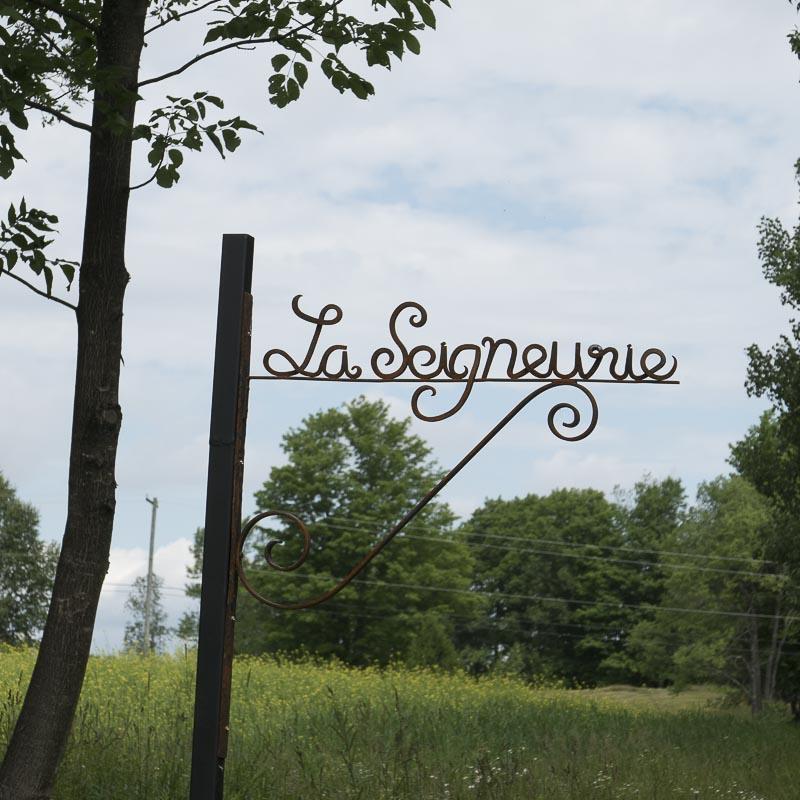
Centuries ago, when Quebec was a French colony, land was farmed under a semi-feudal system. Lords of the manor, known as Seigneurs, were allotted land holdings, and the land was divided in long narrow strips called seigneuries along the banks of the St. Lawrence River and its tributaries.
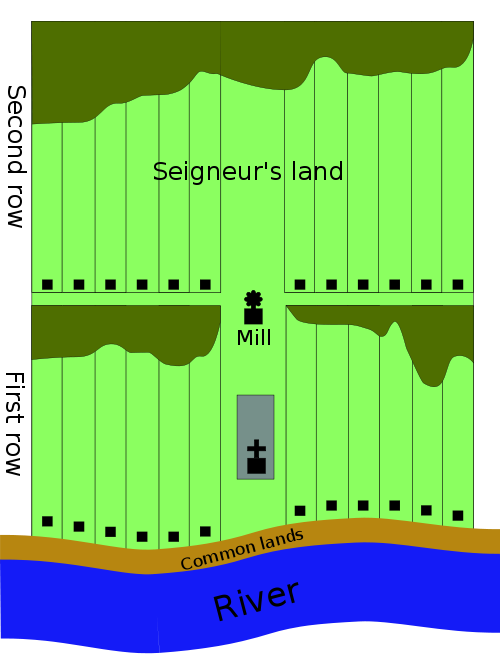
Growing up in Virginia, I never studied Quebec history but my parents loved to travel — and to instruct their children about the places we saw. The year I turned 12, we visited Quebec. Driving along the St. Lawrence, my mother read aloud to my sister and me what seemed an unending number of entries from the AAA Guidebook, hoping we’d learn and remember. One of those educational entries explained why the farm lands were arranged as they were: roads were few and far between, making the river the most convenient means of transportation.
Remembering this, I decided that the road joining North Hatley and Sainte-Catherine-de-Hatley could be a stand-in for the St. Lawrence River. If I planted the field with narrow strips of different crops, I could make history visible, suggesting links between the Quebec of yesterday and the Quebec of today.
It didn’t matter to me that the Seigneurial system was never used in the Eastern Townships. The idea itself seemed like a promising way to transform an ordinary field into something spectacular.
In 2019 we planted strips of barley, flax and canola. I chose these annual crops because of the contrast of colour they would offer: blue flax, yellow canola, green barley that by autumn would rise up above the other two.
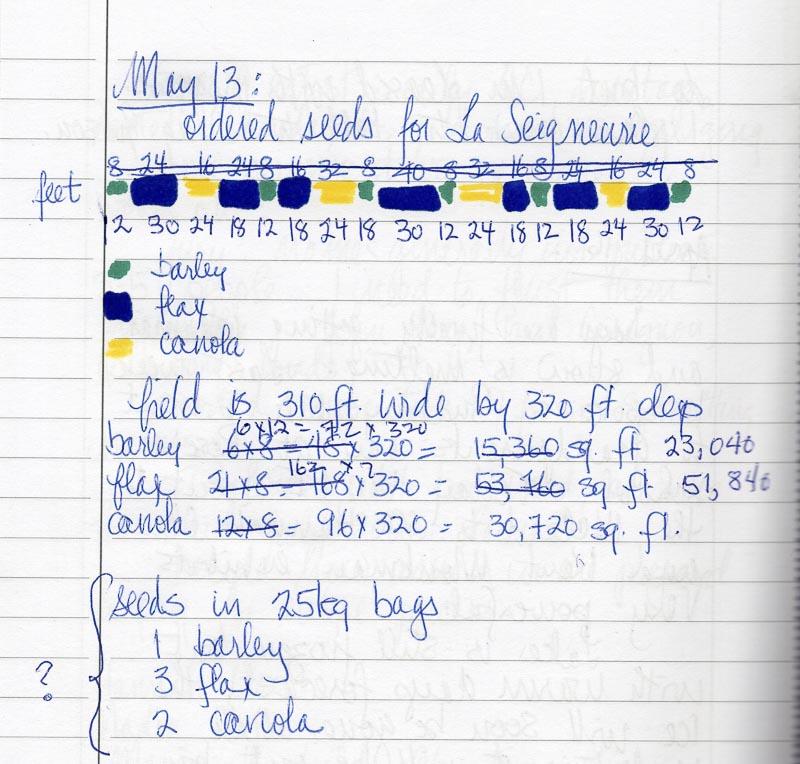
My hopes were high that spring as the field began to grow. The long narrow strips were there, even if initially one crop was hard to distinguish from another.
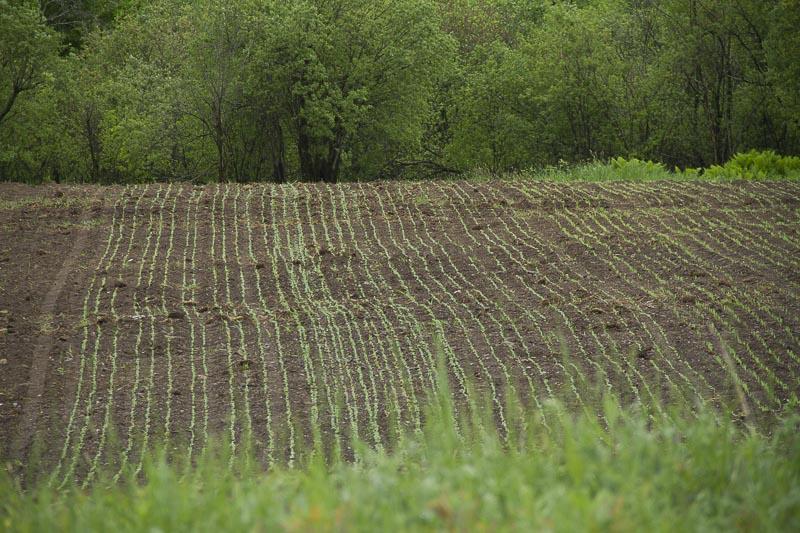
Canola was the first to bloom and its yellow flowers were lovely.
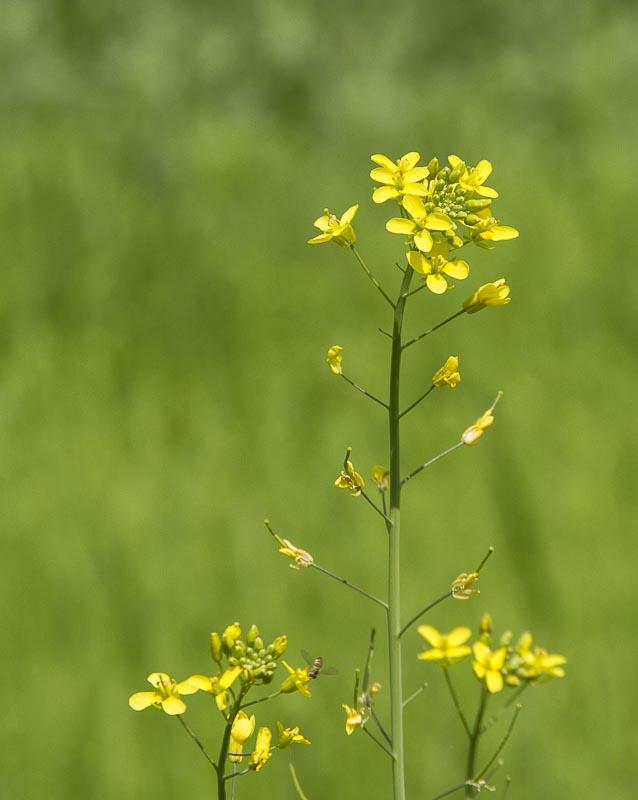
The flax had a charming little blue flower …
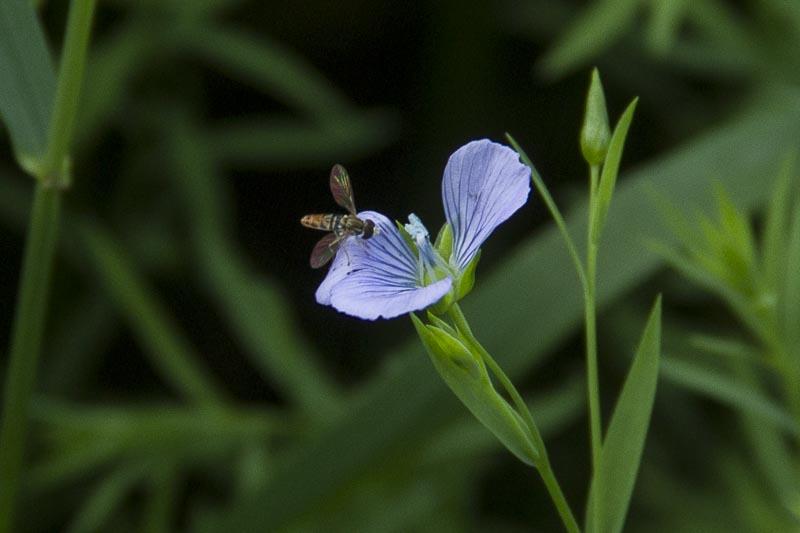
… and its foliage was soft and feathery.
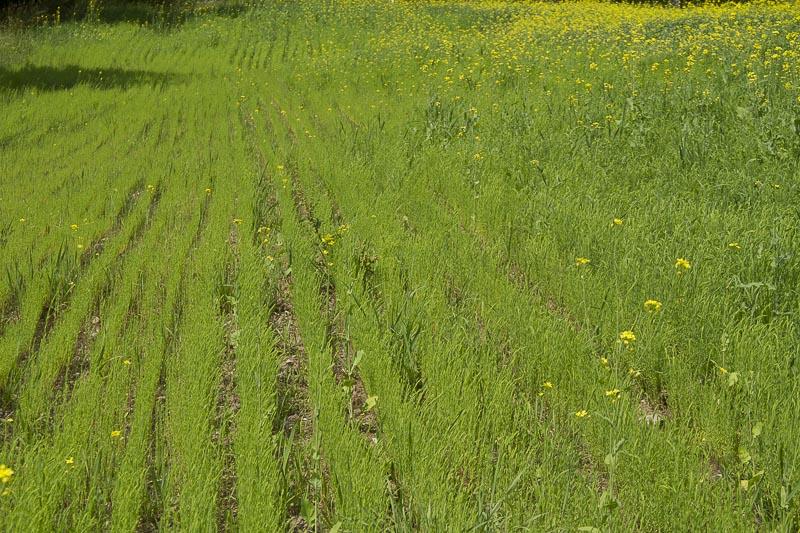
But overall, its impact was nil.
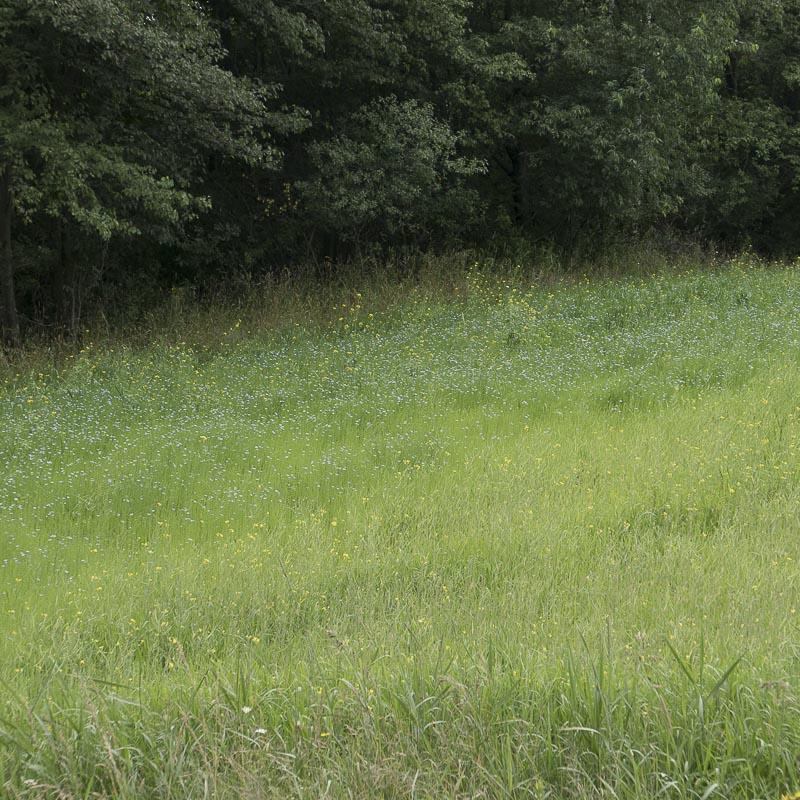
Not to worry, I said to myself. Next year I’ll try something different.
And I did.
In 2020 I used only two plants, red clover and oats, making some strips wider than others. But again, my dream did not come true. The canola, said to be an annual crop, returned more strongly than before, turning the field a cheery yellow. The clover didn’t appear at all.
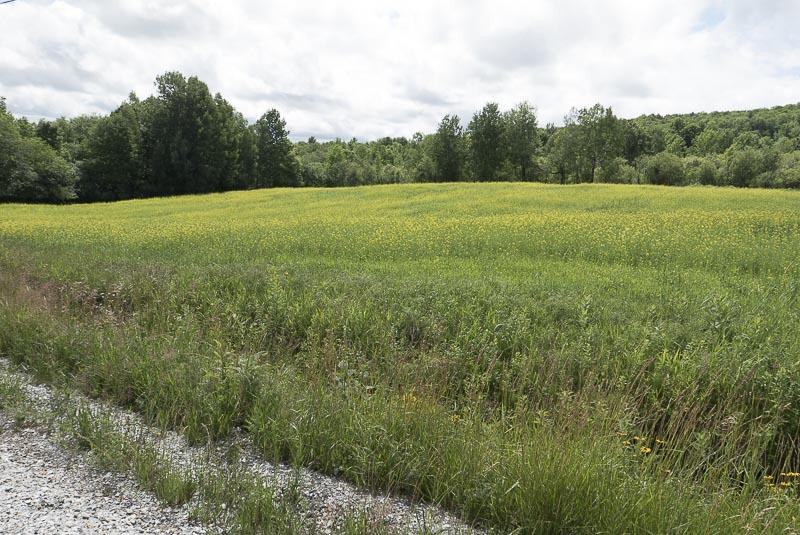
In other parts of the garden and wider landscape, I’d been intervening less, trying to keep my distance and to resist the temptation to control the land. So in year three I decided to do nothing, simply to wait and see what the land produced on its own.
What it produced was a field very much like the one I’d started with, punctuated with canola in the spots where it was happiest. Which was not at all what I was aiming for.
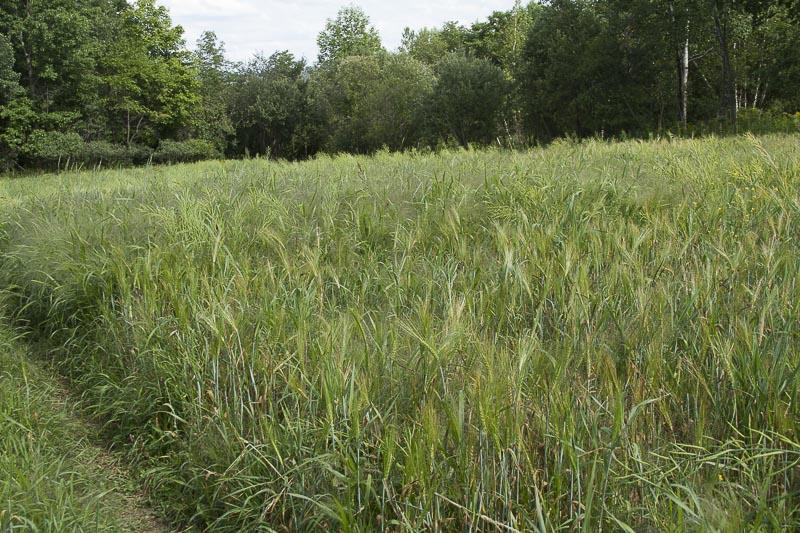
Was I imposing myself on the land? Yes, I was. But my dream of a seigneurial field remained. So last fall, I came up with a third idea. Instead of planting the entire field in narrow strips of different crops, I asked Jacques Gosselin, the wonderful man who works for us, to prepare three wide strips for seeding in the spring.
A neighbouring farmer sowed corn and even before it began to sprout, the contrast between bare ground and field looked promising.
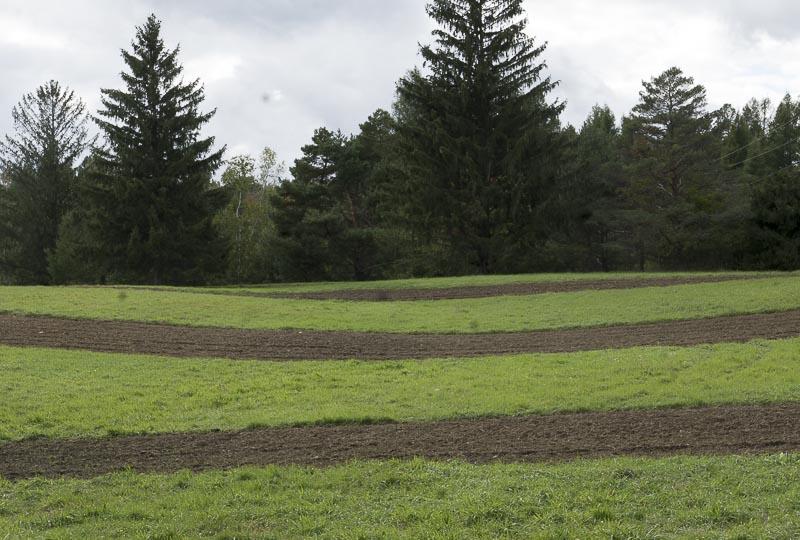
By mid-June it looked as if the corn would fail and canola would win the day yet again.
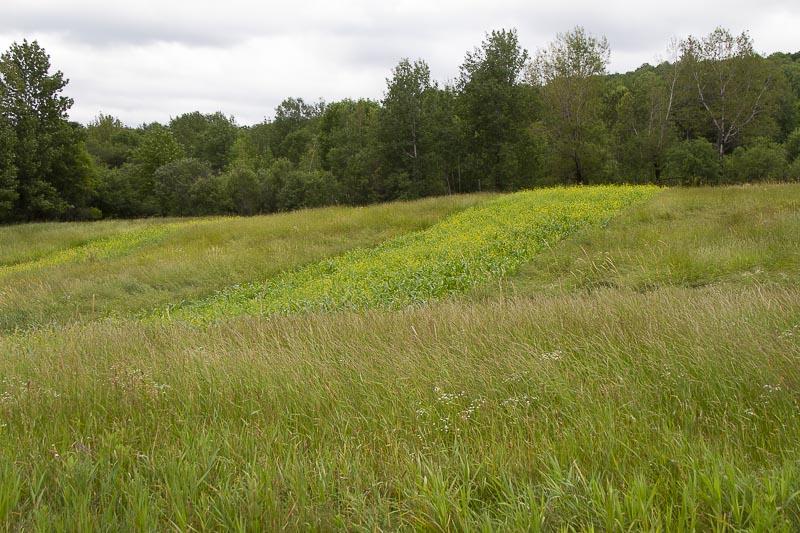
As the summer progressed, though, I became more and more hopeful. The corn was slow to grow, but it was there. It just needed time, plus a bit of patience on my part.
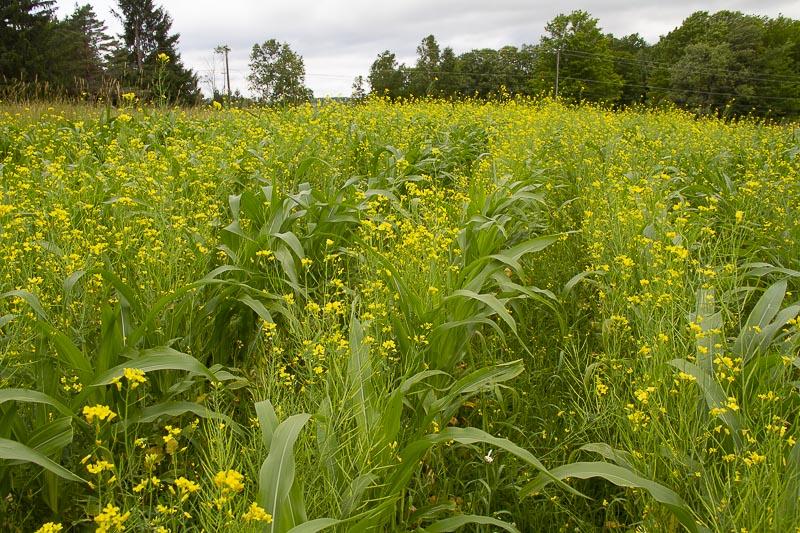
The corn is tall now, creating a strong pattern against the timothy grass.
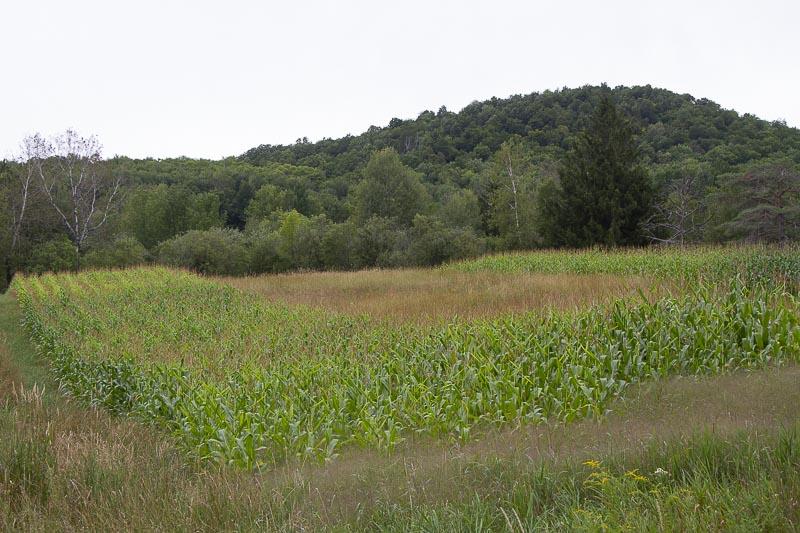
A few days ago, when I walked across the field on the path that bisects it, the cornstalks rose above my head. Wind was blowing and I could almost hear the tassels rustling.
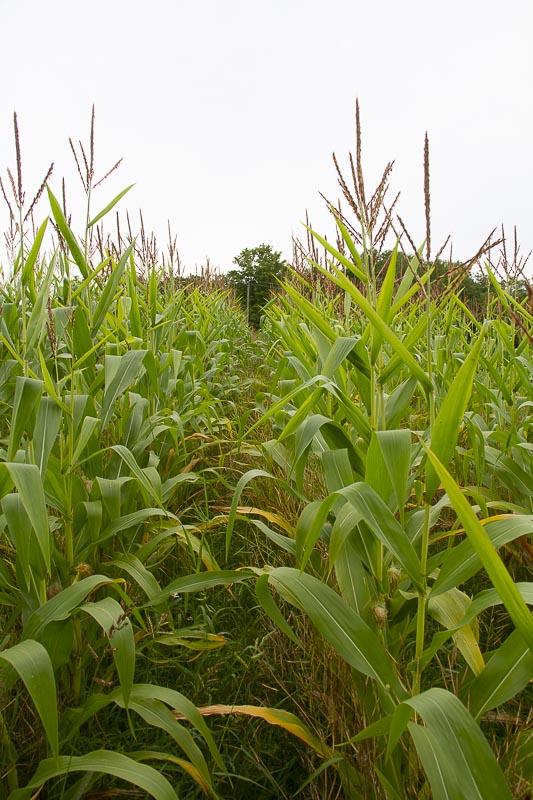
The path leads directly towards an old tree that is more witch-like and magical than anything I could create. Totally dead, it adds a ghostly aura, suggesting a connection to the past. One of these days I may find a way to make the link more explicit.
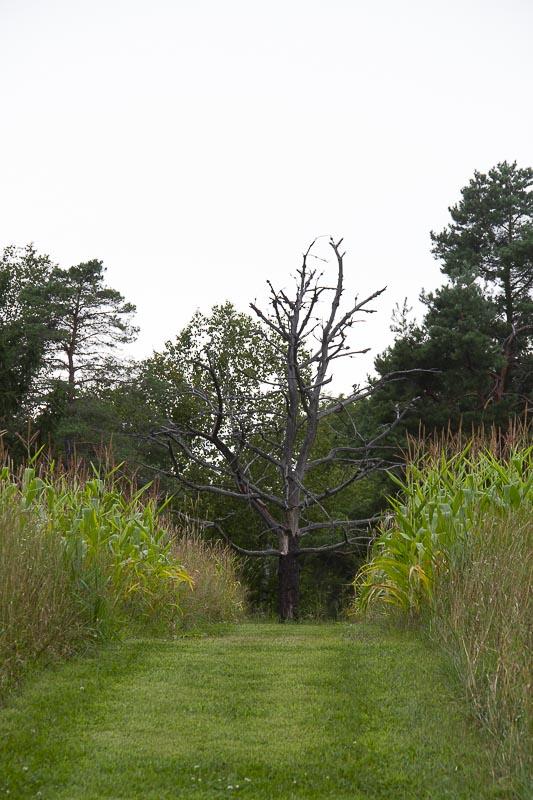
The allusion to the seigneurial system isn’t as strong as I’d intended but the idea is there. And by rotating the crops we plant on the three strips, we may be able to improve the quality of the soil. To me this suggests that my field of dreams is still dreaming. Who knows what it will become next year, or the year after, or all the years to follow.





